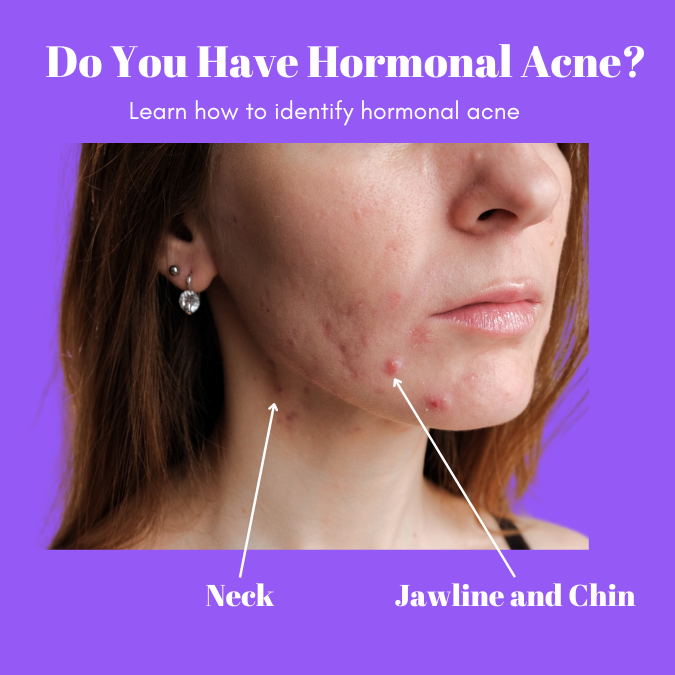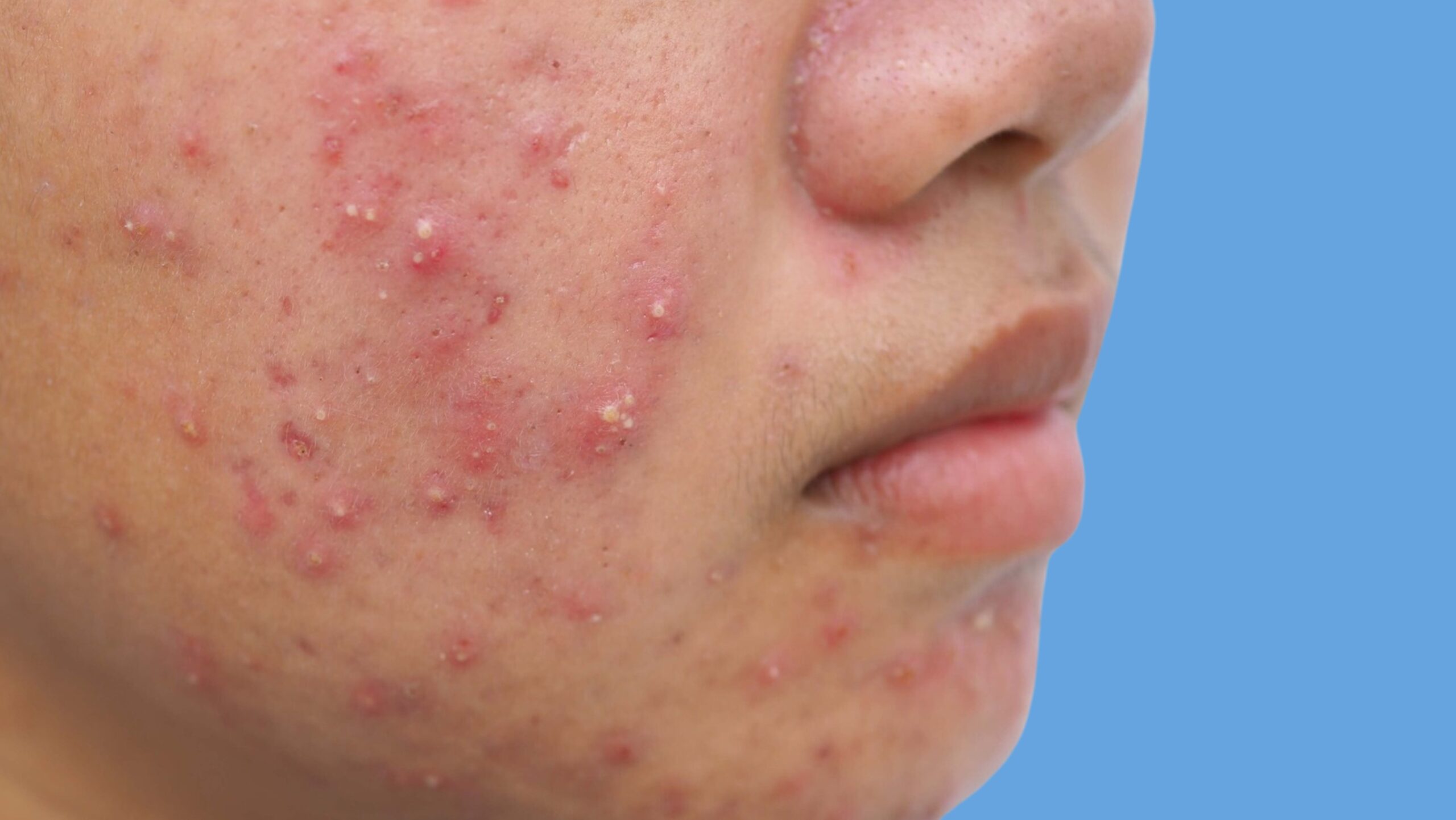For many, acne is more than just an occasional pimple; it’s a battle against persistent, painful cysts that crop up particularly on the chin. This form of acne, known as hormonal cystic acne, can be a major source of frustration. This comprehensive guide will delve into the characteristics, causes, and treatment options for dealing with hormonal cystic acne on the chin.
Hormonal acne distinguishes itself from other forms through its deep, painful cysts that reside beneath the skin’s surface, leading to potential scarring and discomfort upon contact. Adults, notably women, predominantly experience this acne type. Its typical manifestation occurs along the lower section of the face, particularly enveloping the jawline and chin, though it is not restricted to these regions. The cyclical nature of hormonal acne is often synced with menstrual cycles in women, exhibiting flare-ups at specific periods, such as during menstruation or ovulation.
Why Does Cystic Acne Predominantly Appear On Your Chin?
The chin, a hub rich in sebaceous glands, often becomes a hotspot for cystic acne due to hormonal fluctuations. During various phases of the menstrual cycle or pregnancy, hormone levels, especially androgens like testosterone, experience a surge. This elevation prompts the sebaceous glands to produce an excess of oil, culminating in clogged pores and subsequently, acne. The chin, given its abundant sebaceous glands, is inherently susceptible to developing these painful, deep-seated cysts.
The engagement with hormonal fluctuations doesn’t just create a conducive environment for acne; it constructs a persistent, cyclical recurrence of breakouts in this region. Coupled with aspects like stress, which can also fuel hormonal shifts, the chin becomes a recurrent battleground for cystic acne.
Common Areas of Hormonal Acne
While the chin is notably a prevalent zone for hormonal acne, this condition doesn’t restrict itself to one locale. The lower third of the face, including the jawline and around the mouth, is commonly afflicted. Moreover, other regions such as the neck and chest may also be implicated, exhibiting similar cystic, painful breakouts. In some instances, the back can also become a canvas for hormonal acne, presenting management and treatment challenges due to the area’s relative inaccessibility. Recognizing the commonality of these regions in experiencing hormonal acne aids in understanding and developing targeted treatment and prevention strategies.

Causes of Hormonal Acne Cysts on the Chin
1. Hormonal Fluctuations
Hormonal fluctuations are a common trigger for acne, particularly the cystic variety that can appear on the chin. Specific hormones, such as androgens, experience a surge during particular periods like menstruation, pregnancy, or even times of stress. This spike leads to an increase in sebum production, the natural oil our skin produces for moisturization. When sebum production is excessive, it can combine with dead skin cells to clog pores. This environment becomes a fertile breeding ground for bacteria, resulting in inflammation and the formation of cystic acne.
2. Genetic Factors
Genetics play a significant role in determining your likelihood of experiencing acne. If one or both of your parents had acne, especially severe forms like cystic acne, you’re at a higher risk of developing the condition yourself. While you can’t change your genetic makeup, understanding your predisposition can empower you to take preventive measures. Consulting with a dermatologist can provide you with a proactive skincare regimen tailored to your skin type and family history.
3. Lifestyle Factors
Lifestyle choices can significantly influence the frequency and severity of hormonal cystic acne on the chin. Poor sleep quality can interfere with the body’s hormone regulation, exacerbating skin issues. Chronic stress is another culprit; it leads to the release of hormones that can spur on sebum production and inflammation.
Emerging research indicates a connection between dietary choices and acne development, particularly implicating foods with high glycemic indices such as sugary treats, pasta, and white bread. Consuming these foods can trigger spikes in insulin levels, which in turn may induce hormonal imbalances that catalyze acne formation. Moreover, foods high in sugar, dairy, or saturated fats can exacerbate these hormonal fluctuations, worsening existing acne or triggering new outbreaks. To manage hormonal acne more effectively, consider adopting a balanced diet rich in whole grains, fruits, and vegetables. Complementing this with a consistent sleep schedule and stress-reduction techniques like exercise or meditation can further help in alleviating acne symptoms.
Hormonal Acne Treatments
Treating persistent acne, notably around the sensitive mouth and chin areas, necessitates a nuanced, multi-pronged strategy, intertwining topical treatments, oral medication, and adaptations in lifestyle. Often, topical treatments, like tretinoin or benzoyl peroxide, become a first-line defense, leveraging their abilities to hasten skin cell turnover and obliterate acne-inducing bacteria. Nevertheless, the sensitive skin around the mouth and chin may react with redness, peeling, or dryness to these potent solutions, demanding a tailored regimen under a healthcare provider’s guidance. Lifestyle alterations, such as honing stress management techniques and dietary modifications, additionally play a pivotal role, offering an auxiliary layer of defense against breakouts by mitigating potential aggravating factors.
In instances where acne demonstrates resilience against initial treatments, or presents with a severity that necessitates aggressive intervention, oral medications like antibiotics or hormonal contraceptives may come into play. Antibiotics, such as doxycycline or minocycline, work tirelessly against the bacteria that catalyze acne, while hormonal contraceptives aim to stabilize the hormonal ebbs and flows that can precipitate breakouts. Typically, these strategies coexist alongside topical treatments, providing a multifaceted approach, albeit with their own potential side effects and considerations, particularly when other treatment modalities have proven ineffectual.
Diving further into hormonal treatments, anti-androgen medications like spironolactone carve out their own niche, specifically addressing hormonal acne by tempering androgen levels, subsequently reducing sebum production and acne. These are frequently recommended for women who encounter acne flares in tandem with their menstrual cycles. Moreover, for substantial, painful cystic acne, corticosteroid injections present a rapid, albeit short-term, solution. Administered directly into the acne cyst, these injections alleviate inflammation and expedite healing but are generally reserved for severe cases and are not a sustainable long-term solution. Ultimately, threading through the journey of acne management necessitates professional insight to ensure treatments are tailored, effective, and mindful of the individual’s unique dermatological needs.
Preventive Measures and Empowering Steps
Managing hormonal cystic acne, especially on the chin, means combining smart skin care and learning about the acne itself. Using makeup that won’t clog pores, keeping a regular skincare routine, and avoiding picking at acne are key to preventing worse breakouts. Although dealing with this acne can be tough both physically and emotionally, learning about its characteristics and treatment options, and working with a dermatologist to make a personal skin care plan, can help guide you towards clearer skin and boost your confidence. So, understanding and taking action against acne involves both looking after your skin day-to-day and getting the right professional advice and treatment.








